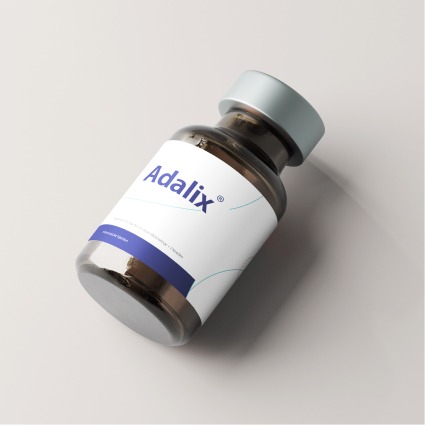Introduction
Biopharmaceutical companies in Central and Eastern Europe (CEE) are playing an increasingly important role in the global pharmaceutical industry. These companies are developing innovative new drugs and treatments for a wide range of diseases, and they are also playing a vital role in the production of generic drugs.
In recent years, CEE biopharmaceutical companies have made significant progress in terms of research and development, clinical trials, and manufacturing. This is due in part to the region’s strong scientific base, as well as its growing investment in healthcare.
CEE biopharmaceutical companies are also benefiting from the region’s growing population and increasing disposable incomes. This is leading to a growing demand for pharmaceutical products and services.
As a result of these factors, the CEE biopharmaceutical market is expected to grow rapidly in the coming years. This growth will be driven by the development of new drugs and treatments, as well as the increasing production of generic drugs.
Latest advancements and achievements of biopharmaceutical companies in Central and Eastern Europe
CEE biopharmaceutical companies have made a number of significant advancements and achievements in recent years. Some of the most notable examples include:
- The development of new drugs and treatments for a wide range of diseases. CEE biopharmaceutical companies are developing new drugs and treatments for a wide range of diseases, including cancer, cardiovascular disease, infectious diseases, and neurological disorders. For example, Polish company Ryvu Therapeutics is developing a novel drug for the treatment of multiple sclerosis, while Hungarian company Richter Gedeon is developing a new drug for the treatment of chronic kidney disease.
- The increasing production of generic drugs. CEE biopharmaceutical companies are playing an increasingly important role in the production of generic drugs. Generic drugs are copies of branded drugs that have gone off-patent. They are typically much cheaper than branded drugs, and they can make a significant contribution to reducing healthcare costs. For example, Romanian company Antibiotice SA is a leading producer of generic antibiotics, while Polish company Polpharma is a leading producer of generic cardiovascular drugs.
- The growing investment in research and development. CEE biopharmaceutical companies are investing heavily in research and development. This is leading to the development of new drugs and treatments, as well as the improvement of existing products. For example, Czech company BioVendor is investing in the development of new diagnostic tools for the early detection of cancer, while Slovak company InoBat Auto is investing in the development of new batteries for electric vehicles.
Advantages of investing in biopharmaceutical companies in Central and Eastern Europe
There are a number of advantages to investing in biopharmaceutical companies in CEE. These include:
- A strong scientific base. CEE has a strong scientific base, with a number of world-renowned universities and research institutions. This provides biopharmaceutical companies with access to a pool of highly skilled and experienced scientists.
- A growing market. The CEE pharmaceutical market is expected to grow rapidly in the coming years, driven by the region’s growing population and increasing disposable incomes.
- Government support. CEE governments are increasingly supportive of the biopharmaceutical industry. They are providing financial incentives and other forms of support to help biopharmaceutical companies grow and develop.
- Favorable tax regimes. CEE countries have favorable tax regimes for businesses, which can make them attractive destinations for foreign investment.
The future of diseases with and without biopharmaceutical companies in Central and Eastern Europe
Biopharmaceutical companies are playing a vital role in the fight against diseases in CEE. They are developing new drugs and treatments for a wide range of diseases, and they are also making generic drugs more affordable and accessible.
Without biopharmaceutical companies, the future of diseases in CEE would be much bleaker. Patients would have fewer treatment options, and the cost of healthcare would be much higher.
The current situation of health for biopharmaceutical companies in Central and Eastern Europe
The biopharmaceutical industry in CEE is still in its early stages of development, but it is growing rapidly. The industry is benefiting from a number of factors, including the region’s strong scientific base, growing population, and increasing disposable incomes.
However, the biopharmaceutical industry in CEE also faces a number of challenges. These include:
- Limited access to funding. Biopharmaceutical companies need significant funding to develop new drugs and treatments. Access to funding can be limited in CEE, particularly for small and medium-sized companies.
- Regulatory challenges. The regulatory environment for the biopharmaceutical industry can be complex and challenging in CEE. This can make it difficult for biopharmaceutical companies to bring new drugs and treatments to market.
- Competition from foreign companies. CEE biopharmaceutical companies face competition from foreign companies, which have more resources and experience.
Despite these challenges, the biopharmaceutical industry in CEE is expected to continue to grow in the coming years. This growth will be driven by the development of new drugs and treatments, as well as the increasing production of generic drugs.
Other aspects of biopharmaceutical companies in Central and Eastern Europe
- The biopharmaceutical industry in CEE is a major employer. It provides direct and indirect employment to hundreds of thousands of people in the region.
- Economic growth. The biopharmaceutical industry is a major contributor to economic growth in CEE. It attracts foreign investment and generates export revenue.
- The biopharmaceutical industry is a highly innovative sector. CEE biopharmaceutical companies are developing new drugs and treatments, as well as improving existing products. This innovation is benefiting patients and improving the quality of healthcare in the region.
Examples of biopharmaceutical companies in Central and Eastern Europe
Some of the leading biopharmaceutical companies in CEE include:
- Poland: Polpharma, Adamed, Celon Pharma, Mabion
- Hungary: Richter Gedeon, Egis
- Czech Republic: Zentiva, BioVendor, Synlab
- Romania: Antibiotice SA, Biofarm
- Slovakia: InoBat Auto, BioTech USA
- Opal Bio Pharma (OBP): BioTech OMAN
Conclusion
The biopharmaceutical industry in Central and Eastern Europe is playing an increasingly important role in the global pharmaceutical industry. CEE biopharmaceutical companies are developing innovative new drugs and treatments for a wide range of diseases, and they are also playing a vital role in the production of generic drugs.
The biopharmaceutical industry in CEE is expected to grow rapidly in the coming years. This growth will be driven by the development of new drugs and treatments, as well as the increasing production of generic drugs.
The biopharmaceutical industry in CEE is a major employer, economic contributor, and source of innovation. CEE biopharmaceutical companies have the potential to make a significant contribution to improving the lives of patients around the world.
Role of Opal Bio Pharma (OBP) in the biopharmaceutical industry in Central and Eastern Europe
Opal Bio Pharma (OBP) is a leading biopharmaceutical company in Oman. OBP is developing and manufacturing biosimilar vaccines, medicines, and treatment methods such as oncology and gene therapy. One of OBP’s purposes is to supply Central and Eastern Europe.
OBP can play a significant role in the biopharmaceutical industry in Central and Eastern Europe by providing the region with access to innovative new drugs and treatments. OBP can also help to reduce healthcare costs in the region by making biosimilar drugs more affordable.
OBP is committed to raising the flag of Oman among the medical industry leaders. The company is investing heavily in research and development, and it is working to bring its products to market as quickly as possible.
Summary
There is a strong thought that OBP has the potential to make a significant contribution to the biopharmaceutical industry in Central and Eastern Europe. The company has the expertise, resources, and commitment to develop and deliver innovative new drugs and treatments to patients in the region.

